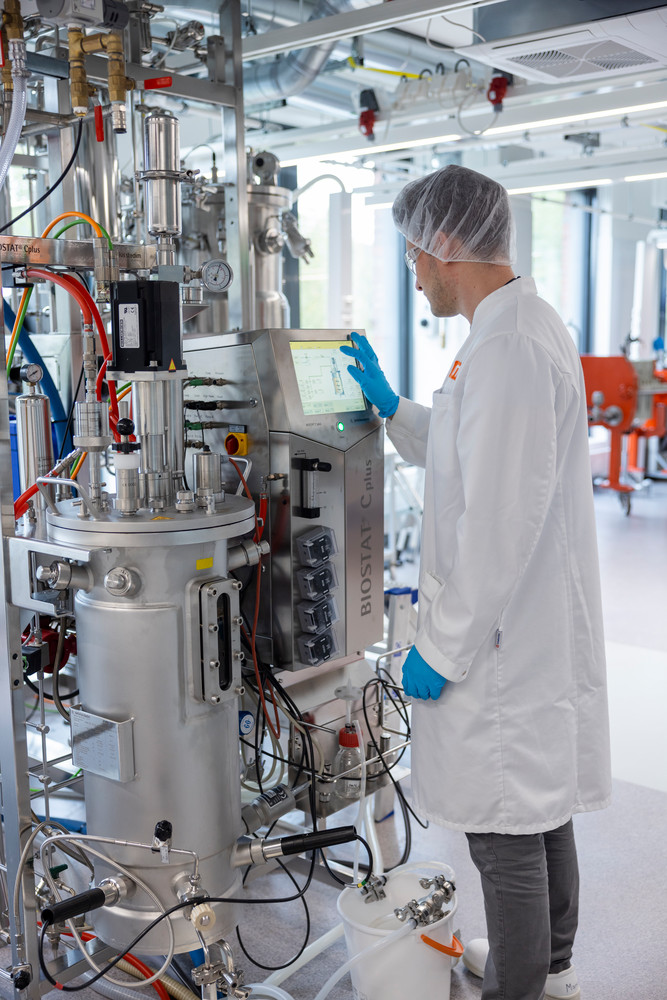Finland has become an alternative protein powerhouse over recent years – not that you would know from talking to people who live there.
The Nordic nation punches above its weight in terms of scientific innovation – almost topping the list of researchers working in this area per million inhabitants – and Finnish startups have attracted impressive investments, pulling in nearly $107 million (€101 million) last year, up two and a half times the amount raised in 2023.
But as Jukka Kajan, executive director of Plant Based Food Finland – the country’s plant-based foods association – put it during my recent visit: “Finnish people are too humble. There’s lots of great alternative protein stuff happening here. It should be in the headlines and a source of national pride, but nobody really talks about it.”
I’d come to Finland on a snowy January to witness this quiet revolution for myself and understand the reasons behind the country’s under-the-radar rise.
First on the agenda was a trip to Solar Foods’ new commercial-scale facility in Vantaa, on the outskirts of Helsinki. The facility, with its 20,000-litre bioreactor, was built to support the commercial development of their fermentation-made protein Solein – made using carbon dioxide, water and solar-generated electricity.
The resulting yellow powder has a neutral taste on its own, but this almost flavourless base provides a highly adaptable ingredient that can replace any protein.
A chef demonstrated the product’s versatility by using it to make mouth-watering dishes from tortellini to soup, but while Solein has huge potential in the gourmet food world, it is also high in complete and bioavailable protein, with potential in many other applications such as in sports nutrition drinks.
Repurposing historic technologies
I also visited mycoprotein startup Enifer’s pilot plant in nearby Espoo to learn about another fascinating aspect of Finland’s alternative protein sector – its ability to repurpose historic technologies for modern food production.
The company’s technique, originally developed in the 1960s for upcycling wood pulp waste into animal feed, lay dormant for decades after Finland’s timber industry declined.
That was until scientists at VTT Technical Research Centre of Finland revived this process, adapting it to develop alternative proteins using readily available sidestreams.
Ironically, the scale at which this technology was originally used meant researchers had to reverse the usual trajectory of innovation – forcing them to scale production down to pilot levels so they could investigate how it could be reapplied to this new application before expanding again.
The alternative protein startup factory
VTT is one of the major drivers behind Finland’s food tech success and has spun out many of the nation’s startups.
Along with Enifer and Solar Foods, precision fermentation startup Onego Bio – which is developing animal-free egg whites – emerged from this ecosystem, benefitting from world-class fermentation expertise.

I was able to see VTT’s impressive food pilot plant facilities myself when I gave a keynote speech to Pro Vege members there.
Finland’s food innovation sector – uniquely – is also heavily supported through loans and grants from Business Finland, the government’s business development arm, which has enabled companies like Solar Foods to scale rapidly, as well as Nordic Foodtech VC, an investment firm dedicated to supporting early-stage food innovation.
Locally grown raw materials
Another distinctive element of Finland’s alternative protein sector is its commitment to using locally grown raw materials, with many plant-based meat and dairy brands sourcing ingredients directly from local growers and handle their own processing, ensuring a Finnish supply chain.
Happy Plant Protein – another VTT spinout – is pioneering new plant protein extrusion techniques using only local raw materials, bypassing imported soy in favour of fava beans and oats.
This approach boosts companies’ sustainability credentials and provides an income stream to the country’s farmers, but also caters to the Finnish preference for local products – something that is reflected in the country’s consumer behaviour.
While plant-based proteins are increasingly appearing on supermarket shelves, the market is largely dominated by domestic companies rather than multinational brands – creating a self-sustaining ecosystem but presenting challenges for startups hoping to expand internationally.
Need for more infrastructure
Although the country excels in early-stage food innovation, scaling up production still remains an obstacle for many smaller companies.
While Finland’s home-grown public-private approach has so far enabled investment, the country does not have the wealth of many of its Scandinavian neighbours. Jukka and other industry leaders say more international investment – particularly from countries like Denmark and Norway – will be vital to helping Finnish startups grow beyond the domestic market.
However, although Finland’s strong research institutions, government support, and sustainability mindset should make it a world leader, he adds that the country’s alternative protein potential has so far failed to capture the attention of its politicians and the general public – something he and his colleagues are keen to address.
Finland has so far been the quiet giant of the alternative protein world, but its remarkable success is something the country should be shouting about.


